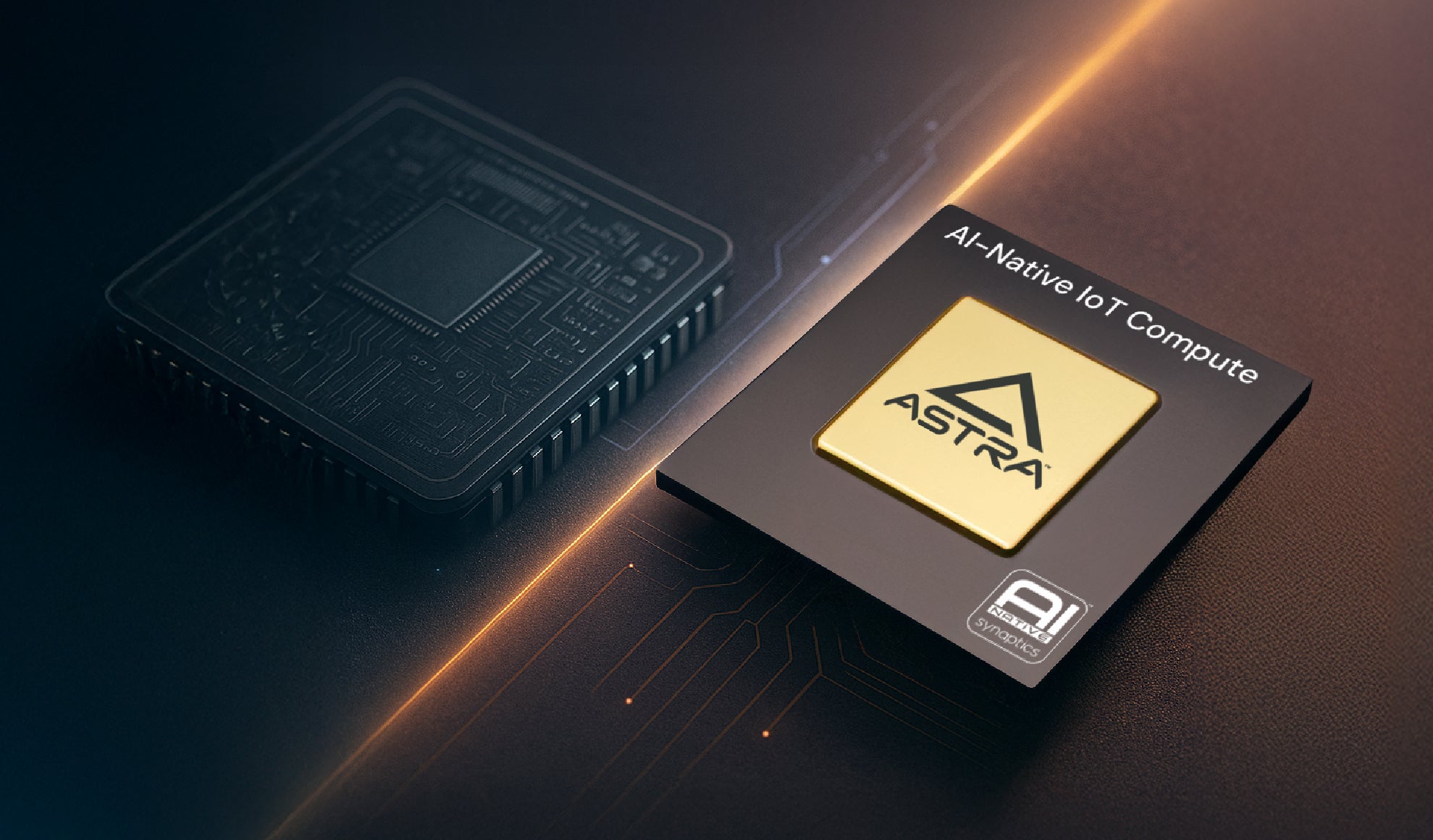目前的传统芯片架构已经难以跟上物联网(IoT)的发展步伐。随着人工智能(AI)从云端不断向边缘迁移,传统的芯片架构已无法满足下一代智能物联网设备的需求。传统的微处理器(MPU)在边缘计算中存在明显局限:它们缺乏高效的 AI 加速能力、实时处理性能以及足够的能效,难以在非云端环境下处理复杂且数据密集的工作负载。要支持这一智能时代的转变,市场需要一类全新的 AI 原生芯片——它们从架构层面为边缘智能而生。
AI 原生芯片崛起的五大因素
市场的力量正加速推动对新一代 AI 原生边缘芯片的需求增长。云端 AI 的局限性日益显现,消费者与企业用户都在寻求更具隐私性、成本效益、更快响应速度及更高能效的解决方案。
- 边缘侧AI 的崛起:大型语言模型(LLM)正变得越来越小型化与高效化,能够直接在本地设备上运行,无需依赖云端计算。
- 隐私保护:用户愈发担心个人数据被上传至云端处理。将数据保留在本地设备上,是缓解隐私顾虑的有效方式。
- 成本因素:市场对云端 AI 服务的直接经济成本与间接环境成本的认知不断提高,促使更多企业寻求在设备端实现智能计算的替代方案。
- 延迟问题:对于需要实时响应的应用来说,数据往返云端所产生的延迟太长·,根本无法满足需求。边缘计算能显著提升响应速度,改善用户体验。
- 能耗要求:能效正成为关键考量因素。即将于2027年实施的欧盟生态设计法规,将对家用电器与智能家居设备设定严格的最大功耗上限。北美和亚太地区也预计会出台类似规定,全球对高能效设备的重视正不断提升。
传统芯片的局限
目前很多物联网设备用的芯片,并不是为 AI 驱动的新应用设计的。因此在技术和商业层面都存在显著短板,难以满足未来需求。
技术不足
现有芯片架构在以下五个关键方面表现不足:
- 缺乏 AI 原生特性:传统芯片通常不支持关键的 AI 运算,例如 Transformer,这是边缘计算中许多现代数学运算的核心。虽然已有高端昂贵的设备支持 Transformer ,但将这一能力引入成本可控、单价仅几美元的芯片,是一次重大变革。
- 集成度有限:现有芯片缺乏对专用加速器的深度整合,限制了处理未来 AI 工作负载的能力。
- 设计成本过高:现有的许多芯片是从其他市场(如汽车)改造而来,带有 IoT 应用并不需要的高成本功能,如车规级 IP。有些厂商会采用 “binning”(分级筛选)策略,把没达到汽车标准的芯片推向市场,而不是专门为IoT需求设计芯片。
- 性能与功耗表现不佳:现有方案的 MCU 核心性能有限,在物联网场景下功耗偏高。现在衡量芯片优劣的标准还要看它用每瓦电、每块钱能发挥多少实力, AI 能力已成为性能评估中不可或缺的一部分。
- 内存选项受限:替代供应商通常仅提供 LPDDR4 内存,而 IoT AI 处理器需要支持 DDR3、DDR4 和 LPDDR4 的灵活组合,使客户在供应链和成本上有更多选择。
商业与生态系统挑战
除了技术局限之外,大型半导体厂商的商业做法也为物联网设备制造商带来了额外风险:
- 供应商锁定:大型芯片厂商正在收购边缘 AI 软件提供商,并将这些专有软件捆绑在自家硬件中。这样一来,客户被限制在封闭生态系统内,创新能力和软件移植性都受到制约。
- 供应链风险: 疫情暴露了供应链的脆弱性。大型半导体厂商往往优先保障最重要的客户,使其他 OEM 无法获得充分支持。这使业界普遍认识到,需要建立可靠的第二供应源策略。
定义新一代芯片
为应对上述挑战,市场亟需一种全新类型的芯片,其设计理念与传统芯片有根本性差异。
核心特性
这一新型芯片具备以下特点:
- 专为物联网设计:它是 AI 原生、多模态芯片,专门针对消费级与工业物联网应用开发,不包含与 IoT 无关的功能模块或 IP。
- 优化综合效率:在性能、功耗和成本的综合效率上表现最佳,同时也涵盖了 AI 能力。
- 面向未来:设计灵活可扩展,能够支持未来 AI 技术发展,为客户提供“未来保障”。例如SL2610 产品系列不仅满足甚至还超越 了2027 年欧盟生态设计法规的要求。
设计与平台优势
- 引脚兼容性:整个产品系列保持引脚兼容,客户可轻松在多款产品间扩展或缩减功能,无需重新设计硬件,显著缩短产品上市时间。
- 开放硬件与软件:新型设计将灵活的硬件与真正开源的软件体验相结合,使芯片创新能够跟上快速发展的软件创新步伐。通过采用开源标准,例如 MLIR 兼容的 IREE compiler 和runtime,降低了 AI 开发门槛,减少对厂商专有工具的依赖。
- 强大的生态合作伙伴关系:与行业领先企业合作,让开发者能够接入这一开放生态,并基于最佳实践构建庞大的生态系统。
真实应用场景
这一新型芯片让许多以前因成本高或实现难度大而无法落地的实际应用成为可能。
- 智能家居:想象你可以与洗碗机对话:你问“为什么我的一些餐具没有被清洗干净?”,设备就会告诉你滤网堵塞了,因为所有必要的信息和计算能力都在设备本身。或者想象一个带有丰富动画 3D 图形界面的智能恒温器,这种增强用户体验的功能,传统仅支持 2D GPU 的芯片是无法实现的。
- 工业工厂:在工业环境中,这类芯片可支持经济高效的基于视觉的边缘 AI 系统,部署在生产线上自动检测缺陷或污染物,替代既慢又昂贵的人工检查。它也非常适合用于预测性维护,例如分析时间序列数据,监控糖果包装中的封装空气状态,并在故障发生前预测问题,避免生产中断。
共建物联网未来
市场对隐私、成本和实时性的需求叠加传统硬件局限,显示出新一代 AI 原生、经济高效、开放芯片对物联网创新的重要性。我们诚邀开发者参与这一全新的开放开发模式,共同构建边缘 AI 应用的未来。

